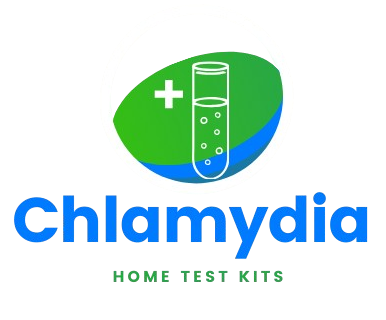“An Introduction to STIs: Chlamydia vs. Gonorrhea”
Burning sensation? Unusual discharge? 😬 These symptoms might send you into a panic, especially if you suspect a sexually transmitted infection (STI). But before you jump to conclusions, it’s crucial to understand the differences between two common culprits: chlamydia and gonorrhea.
While both are bacterial infections that can affect your reproductive health, they’re not identical twins. Knowing the distinct characteristics of each can be the key to timely diagnosis and effective treatment. 🔍 In this blog post, we’ll dive deep into the world of these STIs, unraveling their unique symptoms, exploring diagnostic methods, and discussing treatment options. We’ll also shed light on the potential complications if left untreated and arm you with prevention strategies to keep yourself safe. So, buckle up as we embark on this informative journey to distinguish between chlamydia and gonorrhea!+ Add Section
Understanding Chlamydia and Gonorrhea
A. Definition and causative agents
Chlamydia and gonorrhea are two distinct sexually transmitted infections (STIs) caused by different bacteria. Chlamydia is caused by Chlamydia trachomatis, while gonorrhea is caused by Neisseria gonorrhoeae. Both infections can affect the genitals, rectum, and throat, but they have different characteristics and potential complications.
B. Prevalence and at-risk populations
Chlamydia and gonorrhea are among the most common STIs worldwide. Here’s a comparison of their prevalence and at-risk populations:
Click “Get tested today—early detection is key!”
| Aspect | Chlamydia | Gonorrhea |
|---|---|---|
| Global prevalence | Higher (129 million cases annually) | Lower (87 million cases annually) |
| Most affected age group | 15-24 years old | 15-24 years old |
| Gender distribution | More common in women | More common in men |
| High-risk groups | Sexually active young adults, men who have sex with men (MSM), individuals with multiple partners | Similar to chlamydia, with higher rates in urban areas and among MSM |

C. Modes of transmission
Both chlamydia and gonorrhea share similar transmission routes:
- Unprotected vaginal, anal, or oral sex with an infected partner
- From mother to child during childbirth
- Sharing sex toys without proper cleaning between uses
It’s important to note that:
- Both infections can be transmitted even without ejaculation
- They can coexist, meaning a person can be infected with both simultaneously
- Neither infection can be spread through casual contact like hugging, kissing, or sharing utensils
Understanding these fundamental aspects of chlamydia and gonorrhea is crucial for recognizing the risks and taking appropriate preventive measures. Next, we’ll explore the specific symptoms associated with each infection to help distinguish between the two.+ Add Section
“Protect yourself—explore our prevention methods!”
Symptoms: Spotting the Differences
Now that we understand what chlamydia and gonorrhea are, let’s dive into their symptoms and how to differentiate between them. While these two sexually transmitted infections (STIs) share some similarities, there are key differences in their manifestations.
A. Common symptoms of chlamydia
Chlamydia often presents with subtle symptoms, which can include:
- Unusual vaginal or penile discharge
- Burning sensation during urination
- Lower abdominal pain
- Pain during intercourse (for women)

“Experience peace of mind with our safe STI products!”Everlywell ChlamydiaEverlywell Chlamydia
B. Typical signs of gonorrhea
Gonorrhea, on the other hand, may exhibit more noticeable symptoms:
- Thick, cloudy, or bloody discharge from genitals
- Frequent urination
- Swollen or painful testicles (in men)
- Vaginal bleeding between periods (in women)
C. Overlapping symptoms
Both infections share some common symptoms, which can make differentiation challenging:
| Symptom | Chlamydia | Gonorrhea |
|---|---|---|
| Painful urination | ✓ | ✓ |
| Genital discharge | ✓ | ✓ |
| Rectal pain/discharge | ✓ | ✓ |
| Sore throat | ✓ | ✓ |
D. Asymptomatic cases
It’s crucial to note that both infections can be asymptomatic:
- Up to 75% of women and 50% of men with chlamydia show no symptoms
- About 50% of women and 10% of men with gonorrhea may be asymptomatic
This underscores the importance of regular STI testing, especially for sexually active individuals with multiple partners.
Given the overlap in symptoms and the possibility of asymptomatic cases, accurate diagnosis requires proper testing. Next, we’ll explore the diagnostic methods used to identify and distinguish between these two infections.+ Add Section
Diagnostic Methods

Diagnostic Methods
Now that we’ve examined the symptoms of chlamydia and gonorrhea, let’s explore how these infections are diagnosed. Accurate testing is crucial for proper treatment and preventing the spread of these STIs.
A. Testing for Chlamydia
Chlamydia testing typically involves one of the following methods:
- Nucleic Acid Amplification Tests (NAATs)
- Urine samples
- Swab tests
“Don’t wait—seek treatment and stay healthy!”
NAATs are the most sensitive and reliable tests for chlamydia. They can detect the genetic material of the bacteria in various sample types.
B. Detecting Gonorrhea
Gonorrhea testing methods are similar to those for chlamydia:
- NAATs (also preferred for gonorrhea)
- Gram stain (for male urethral samples)
- Culture tests (less common but useful for antibiotic resistance testing)
| Test Type | Chlamydia | Gonorrhea | Accuracy |
|---|---|---|---|
| NAATs | Yes | Yes | Highest |
| Urine | Yes | Yes | High |
| Swab | Yes | Yes | High |
| Gram Stain | No | Yes (males) | Moderate |
| Culture | Rare | Yes | Moderate |
C. Importance of Regular Screening
Regular screening is vital for several reasons:
- Early detection allows for prompt treatment
- Prevents transmission to sexual partners
- Reduces the risk of complications
- Helps control the spread of STIs in the community
Healthcare providers recommend annual screening for sexually active individuals under 25 and those with multiple partners or other risk factors.
With accurate diagnostic methods available, it’s crucial to understand the treatment approaches for these infections. Let’s explore how chlamydia and gonorrhea are managed once diagnosed.

Treatment Approaches
When it comes to treating chlamydia and gonorrhea, antibiotics are the primary line of defense. However, the specific medications and treatment approaches differ for each infection.
A. Antibiotics for chlamydia
Chlamydia is typically treated with oral antibiotics. The most common medications include:
- Azithromycin: A single-dose treatment
- Doxycycline: Taken twice daily for 7 days
| Medication | Dosage | Duration |
|---|---|---|
| Azithromycin | 1 gram | Single dose |
| Doxycycline | 100 mg | Twice daily for 7 days |
It’s crucial to complete the entire course of antibiotics, even if symptoms improve before finishing the medication.
B. Medications for gonorrhea
Gonorrhea treatment usually involves a combination of antibiotics:
- Ceftriaxone: An intramuscular injection
- Azithromycin: Oral medication
This dual therapy approach helps combat antibiotic resistance and ensures effective treatment.
“Your health matters—make the right choice today!”
C. Antibiotic resistance concerns
Antibiotic resistance is a growing concern, particularly for gonorrhea. To address this issue:
- Healthcare providers closely monitor treatment effectiveness
- Researchers continually develop new antibiotic combinations
- Patients are advised to complete their full course of antibiotics
- Regular follow-up testing is recommended to ensure the infection is cleared
Now that we’ve covered the treatment approaches for both infections, it’s important to understand the potential complications if these STIs are left untreated.+ Add Section
Complications if Left Untreated
Complications if Left Untreated
Now that we’ve explored the treatment approaches for chlamydia and gonorrhea, it’s crucial to understand the potential consequences of leaving these infections untreated. Both diseases can lead to severe complications that can significantly impact your overall health and well-being.
A. Potential long-term effects of chlamydia
Untreated chlamydia can result in a range of serious health issues:
- Pelvic Inflammatory Disease (PID) in women
- Epididymitis in men
- Increased risk of HIV transmission
- Reactive arthritis
| Complication | Description | Prevalence |
|---|---|---|
| PID | Infection of the upper reproductive tract | Up to 15% of untreated cases |
| Epididymitis | Inflammation of the epididymis | Common in men under 35 |
| HIV risk | Increased susceptibility to HIV | 2-5 times higher risk |
| Reactive arthritis | Joint inflammation | 1-3% of cases |
B. Serious consequences of untreated gonorrhea
Gonorrhea, when left untreated, can lead to severe complications:
- Disseminated gonococcal infection (DGI)
- Increased risk of HIV acquisition
- Meningitis or endocarditis in rare cases
- Septic arthritis
C. Impact on fertility and reproductive health
Both chlamydia and gonorrhea can have devastating effects on fertility and reproductive health:
- Fallopian tube scarring
- Ectopic pregnancy risk
- Chronic pelvic pain
- Male infertility due to epididymitis
“Join countless others in finding relief with our chlamydia treatments!”
These complications underscore the importance of early detection and treatment of both chlamydia and gonorrhea. In the next section, we’ll discuss effective prevention strategies to help you avoid these infections and their potential long-term consequences.+ Add Section
Prevention Strategies

Prevention Strategies
When it comes to protecting yourself and your partners from chlamydia and gonorrhea, there are several effective strategies you can employ. Let’s explore the key prevention methods:
A. Safe sex practices
Practicing safe sex is crucial in preventing the transmission of sexually transmitted infections (STIs) like chlamydia and gonorrhea. Here are some essential safe sex practices:
- Use condoms consistently and correctly during all sexual activities
- Limit the number of sexual partners
- Avoid sexual contact if you or your partner have symptoms
- Consider dental dams for oral sex
B. Regular testing and early detection
Regular STI testing is vital for maintaining sexual health and preventing the spread of infections. Here’s why it’s important:
| Benefits of Regular Testing | Recommended Frequency |
|---|---|
| Early detection of infections | At least once a year |
| Prompt treatment | More often if you have multiple partners |
| Prevent complications | Every 3-6 months for high-risk individuals |
| Reduce transmission to partners | Before starting a new sexual relationship |
C. Partner notification and treatment
If you test positive for chlamydia or gonorrhea, it’s crucial to inform your sexual partners. This practice, known as partner notification, helps:
- Prevent reinfection
- Stop the spread of the infection to others
- Ensure your partners receive timely treatment
“Try our product for effective chlamydia treatments!”
Remember, many STI testing centers offer anonymous partner notification services to help you inform your partners discreetly.
By implementing these prevention strategies, you can significantly reduce your risk of contracting or spreading chlamydia and gonorrhea. Next, we’ll summarize the key differences between these two infections to help you better understand their unique characteristics and management approaches.+ Add Section
Conclusion

Chlamydia and gonorrhea are two distinct sexually transmitted infections that share some similarities but differ in their symptoms, diagnostic methods, and treatment approaches. While both can be asymptomatic, they can lead to serious complications if left untreated. Early detection and proper medical care are crucial for managing these infections and preventing long-term health issues.
Practicing safe sex, getting regular STI screenings, and maintaining open communication with sexual partners are essential steps in preventing the spread of chlamydia and gonorrhea. By staying informed about these infections and taking proactive measures to protect your sexual health, you can significantly reduce your risk of contracting or transmitting these STIs. Remember, your health is in your hands – don’t hesitate to seek medical advice if you suspect you may have been exposed to either infection.




